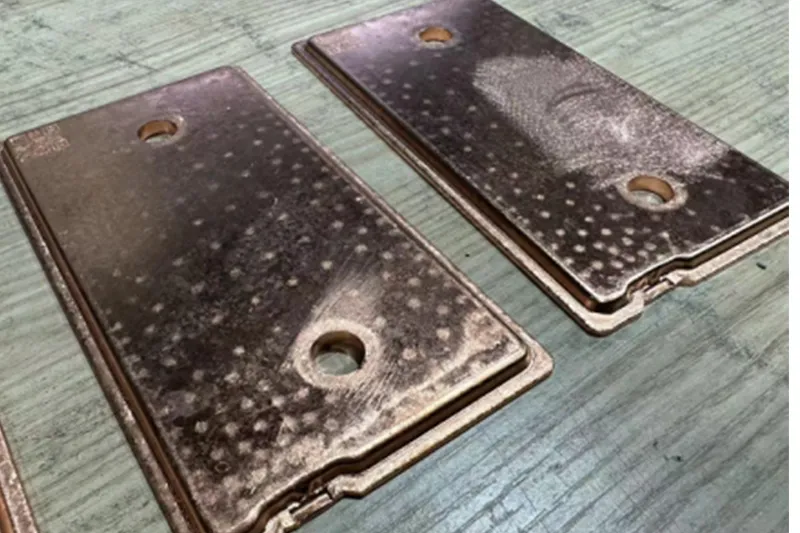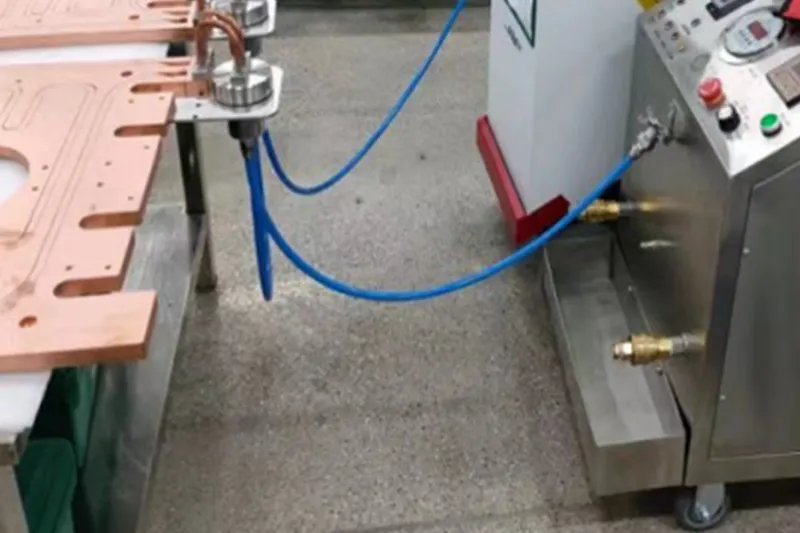Photovoltaic Inverter Cooling Applications
The key to thermal management of photovoltaic inverters is the use of components such as heat sinks and fans to effectively reduce device temperature, ensure efficient conversion, and improve system reliability.
Photovoltaic Inverter Thermal Management.
The thermal management of photovoltaic inverters is crucial, directly affecting system performance and lifespan. In the process of photovoltaic power generation, the operation of the inverter will generate a certain amount of heat. If it cannot effectively dissipate heat, it may cause device overheating, affect conversion efficiency, and even damage the device.The heat sink is one of the key components. Using high thermal conductivity materials such as aluminum alloy, designing fin structures to increase surface area and accelerate heat transfer. A well-designed heat sink can effectively improve the heat dissipation effect. The use of fans is a common active cooling method.
Through a reasonable layout, the fan can introduce surrounding air into the heat sink, accelerating the heat dissipation effect. The intelligent fan control system can adjust the fan speed based on real-time temperature monitoring data, achieving dynamic heat dissipation adjustment. liquid cooling plate technology can also be considered, which can effectively remove heat through liquid circulation cooling. It requires a multi-level design, including a reasonable structure of heat sinks, fans, and good system design, to ensure that the devices operate efficiently while maintaining stable temperature, improving system reliability and lifespan.

How To Design Photovoltaic Inverter Heat Sinks.
The design of photovoltaic inverter heat sink needs to fully consider the heat generated during device operation. Firstly, choose heat dissipation materials with high thermal conductivity, such as aluminum 6061,6063 or 1060 Skived heat sink to improve the overall heat dissipation effect. By designing the structure of the heat sink reasonably, increasing the surface area and promoting heat conduction. Adopting an air-cooled system with intelligent fan control, adjusting the fan speed based on real-time temperature monitoring to ensure heat dissipation efficiency under different workloads.
In addition, considering the close connection between the internal components of the inverter and the heat sink, efficient thermal conductive materials such as thermal are selected to improve thermal conductivity efficiency. Finally, with the help of an intelligent temperature monitoring and control system, the cooling scheme can be adjusted in real time to ensure that a suitable temperature range can be maintained in different working environments. In this comprehensive consideration, the designed heat sink will be able to effectively reduce the temperature of the photovoltaic inverter, ensuring its long-term efficient and stable operation.
Design Photovoltaic Inverter Liquid Cold Plate.
The design of the liquid cooling plate for the inverter needs to fully consider the heat dissipation effect and system stability. Firstly, choose high thermal conductivity metal materials, such as copper or aluminum, as the substrate for liquid cooling plates to ensure good thermal conductivity. The surface of the liquid cooling plate is designed in the shape of fins to increase the contact area with the coolant and improve the efficiency of heat transfer.
In a liquid cooling system, the flowing coolant plays a crucial role. Reasonably design cooling pipes and flow paths to ensure that the coolant can fully cover the entire surface of the liquid cooling plate and quickly remove heat. Adopting an adjustable flow rate control valve to meet the cooling needs under different power and working conditions. To ensure the sealing and corrosion resistance of the liquid cooling plate, advanced sealing technology and corrosion-resistant materials are selected to prevent coolant leakage and system damage.




Vapor Chamber Heat Sink Is Used In Inverters .
Vapor chamber heat sink is based on advanced technological principles and aims to provide efficient thermal management solutions for photovoltaic Inverter . we choose high thermal conductivity copper material as the substrate for the temperature equalization plate, which is designed with precise fluid channels inside. These channels are optimized through fluid dynamics to ensure uniform flow of coolant within the plate.
Then accelerate the diffusion of a large amount of heat to the bottom plate of the heat sink, and use fins to dissipate the large amount of heat. This design not only effectively absorbs and disperses the heat generated by electronic components, but also prevents the accumulation of heat in local areas, ensuring that the entire surface of the temperature equalization plate can maintain a relatively uniform temperature distribution. Provided reliable and efficient thermal management technology for solar inverters.
Heat Pipe Heat Sink Is Used In Inverters And Thermal Test?
The reliability of heat pipe heat sink is crucial for photovoltaic inverters, and thermal testing is a crucial step in ensuring their stability and lifespan. Because the heat pipe may be damaged under high temperature soldering conditions of 250 degrees, and it is also possible to damage the heat pipe during CNC machining of the bottom surface of the heat sink, through thermal testing, we can comprehensively evaluate the reliability and normal operation of the heat pipe heat sink under different working conditions.
Meanwhile, thermal testing can simulate long-term load testing of heat pipe heat sinks in actual operating environments. By observing the performance of heat pipe radiators in high-temperature environments, their adaptability to continuous high load work can be evaluated to ensure that there will be no performance degradation or damage during actual operation. By conducting periodic thermal shock tests, it is possible to simulate the operation of photovoltaic inverters under different temperature changes. This helps to verify the stability of heat pipe heat sink in environments with large temperature fluctuations, ensuring their reliable operation under various climatic conditions.




Case Application Of Photovoltaic Inverters Copper Tube Liquid Cold Plate.
For the case analysis of photovoltaic inverters, we have designed an all Copper tube liquid cold plate for the customer, using the process of copper tubes being pressed into the copper plate. This liquid cooled plate perfectly solves the heating problem of the customer’s inverter. The copper tubes are used in the entire water circulation system, and the temperature control is very low, fully meeting the temperature operation of the entire system. This type of photovoltaic power station and energy storage system is usually built on the top or in large photovoltaic power plants, So, the cost of the entire system is very expensive, and the occurrence of maintenance and failure rates will bring great losses to customers. Therefore, photovoltaic inverter thermal management system is a very important link.







